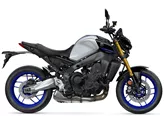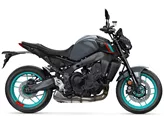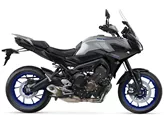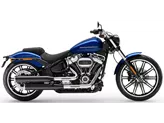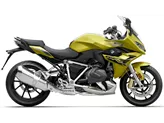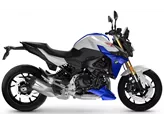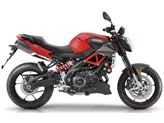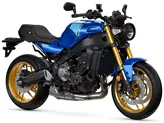Yamaha MT-09 2013 vs. Suzuki GSR 750 2017

Yamaha MT-09 2013

Suzuki GSR 750 2017
Overview - Yamaha MT-09 2013 vs Suzuki GSR 750 2017
In terms of technical specifications, the Yamaha MT-09 2013 and the Suzuki GSR 750 2017 have several similarities. Both bikes have an inline engine type and similar front and rear tire dimensions. They also have the same front tire width and diameter, as well as the same rear tire width and diameter. Additionally, both bikes have a twin tube frame type and double disk front brakes.
However, there are some notable differences between the two models. The Yamaha MT-09 2013 has a more powerful engine, with 115 HP compared to the Suzuki GSR 750 2017's 106 HP. The Yamaha also has higher torque at 87.5 Nm compared to the Suzuki's 80 Nm. The Yamaha MT-09 2013 has a 3-cylinder engine with a displacement of 847 ccm, while the Suzuki GSR 750 2017 has a 4-cylinder engine with a displacement of 749 ccm.

Yamaha MT-09 2013
In terms of chassis, the Yamaha MT-09 2013 has an aluminum frame, while the Suzuki GSR 750 2017 has a steel frame. This may result in differences in weight and handling characteristics. The Yamaha MT-09 2013 has a wheelbase of 1440 mm, while the Suzuki GSR 750 2017 has a slightly longer wheelbase of 1450 mm. Both bikes have the same seat height of 815 mm.
When it comes to weight, the Yamaha MT-09 2013 is lighter with a kerb weight of 188 kg, compared to the Suzuki GSR 750 2017's 211 kg. The Yamaha also has a smaller fuel tank capacity of 14 liters, while the Suzuki has a larger capacity of 17.5 liters.
In terms of strengths, the Yamaha MT-09 2013 is praised for its reasonable price and powerful engine. On the other hand, the Suzuki GSR 750 2017 is commended for its attractive overall appearance, stable handling, successful tuning of the suspension elements, sufficient comfort, and easy-to-read instruments.

Suzuki GSR 750 2017
However, the Yamaha MT-09 2013 does have some weaknesses. It is criticized for its hard chassis and high fuel consumption. On the other hand, the Suzuki GSR 750 2017 has a brake system that requires a lot of manual force and a box swingarm that is not particularly aesthetically pleasing.
Overall, both the Yamaha MT-09 2013 and the Suzuki GSR 750 2017 have their own strengths and weaknesses. The Yamaha offers a more powerful engine at a reasonable price, while the Suzuki provides an attractive appearance, stable handling, and comfortable riding experience. Ultimately, the choice between the two models will depend on the rider's preferences and priorities.
Technical Specifications Yamaha MT-09 2013 compared to Suzuki GSR 750 2017
Pros and Cons in comparison
Pros and Cons in comparison
Yamaha MT-09 2013

The start is frightening - abandonment of 1st gear.
Suzuki GSR 750 2017

A razor-sharp design with an aggressive front and narrow rear - just as speedy street raiders have always wanted. It is a pity that the rear swingarm was neglected (officially for weight reasons, unofficially for cost reasons), and the front dual-piston brake system seems a little weak. However, the performance during the ride, both at high speed and in tight corners, is quite good.
Price Comparison Avarage Market Price Yamaha MT-09 vs Suzuki GSR 750
There are a few key differences between a Yamaha MT-09 2013 and a Suzuki GSR 750 2017. It takes less time to sell a Yamaha MT-09 with 52 days compared to 117 days for a Suzuki GSR 750. Since model year 2013 1000PS.de editors have written 57 reviews for the Yamaha MT-09 and 12 reviews for the Suzuki GSR 750 since model year 2011. The first review for the Yamaha MT-09 was published on 10/06/2013 and now has more than 39,900 views. This compares to more than 5,400 views for the first review on Suzuki GSR 750 published on 05/10/2010.


